The primary focus of Indian students tends to be on Ivy league and large universities on the East and West coasts. However, America’s 600 inland higher education institutions — many as good as the best — are unknown quantities to our school leavers and graduates, writes Dilip Thakore & Summiya Yasmeen
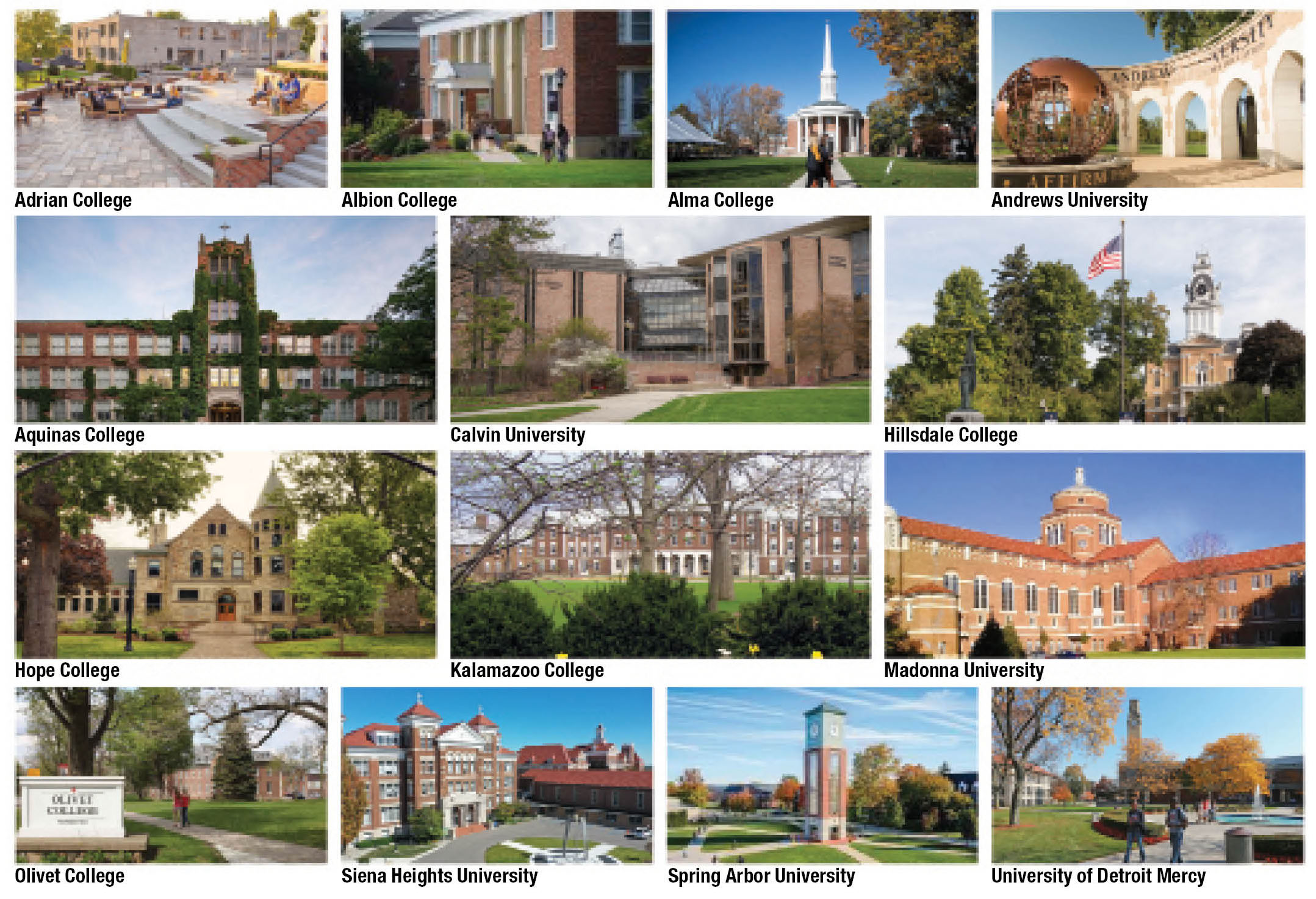
MCA member colleges campuses: grounded in liberal arts and sciences tradition
Although because of adoption of inorganic socialist ideology immediately after independence in 1947 from almost two centuries of exploitative colonial rule, India remains one of the world’s poorest countries with an annual per capita income of $2,097 (Rs.172,000), somewhat paradoxically, it also hosts a middle class estimated at a humongous 432 million with annual household incomes of Rs.5-30 lakh ($6,000-36,000 ppp) by PRICE, a Delhi-based think tank. This translates into the world’s largest middle class after China, and greater than the entire population of the United States.
This status conscious middle class is highly aspirational and unlike the majority of the population, is well-aware of the upward mobility value of high quality education. They send their children almost entirely to fees-levying private schools (48 percent of all 260 million school-going children are in private K-12 education) and are desperate to enroll them in the country’s Top 500 colleges (out of a total 43,000) and 300 (1,110) universities, especially the 23 globally admired Central government-run IITs (Indian Institutes of Technology), 20 postgrad IIMs (Indian Institutes of Management) and 273 government medical colleges.
Unsurprisingly, competition to enter the best colleges and universities is intense. For instance, the 23 IITs admit a mere 2 percent of the 260,000 higher secondary school-leavers who write their famously tough JEE (joint entrance exams). The remainder 10 million school-leavers scramble for admission into the country’s Top 300 government undergrad colleges and universities and Top 500 private colleges/universities ranked by EducationWorld in April and May.
Yet the dream of all middle class households is to bestow their children foreign — especially American — higher education. With their sprawling immaculately landscaped campuses, capital-intensive infrastructure including huge libraries and research capabilities, and high quality faculty, universities in America are sought after by India’s upper middle class who have become acutely aware that the best gift they can give their children is foreign — particularly American — higher education qualifications. And increasingly, households are readily selling land, homes, jewellery, stocks and shares and/or taking large loans to realise their American dream.
Inevitably, not a few agents and consultants have mushroomed across the Indian landscape to promote American colleges and universities which are anxious to enroll undergrad and postgraduate students from India. Over the past half century, Indian students at American universities have not only contributed cultural diversity to their campuses, but many have gone on to distinguish themselves in all walks of life back home in India as also in American academia, business and industry. It’s worthy of note that the top-ranked Deans of Harvard Business School, the Booth School of Business and President-elect of Tufts University among other blue-chip American higher education institutions (HEIs) are India-born. Moreover, Indian alumni of top-ranked Indian and American HEIs head some of America’s most valued corporates including Google, Microsoft and IBM. Therefore, most US universities are ready, willing and able to enroll Indian students, often with generous scholarships.
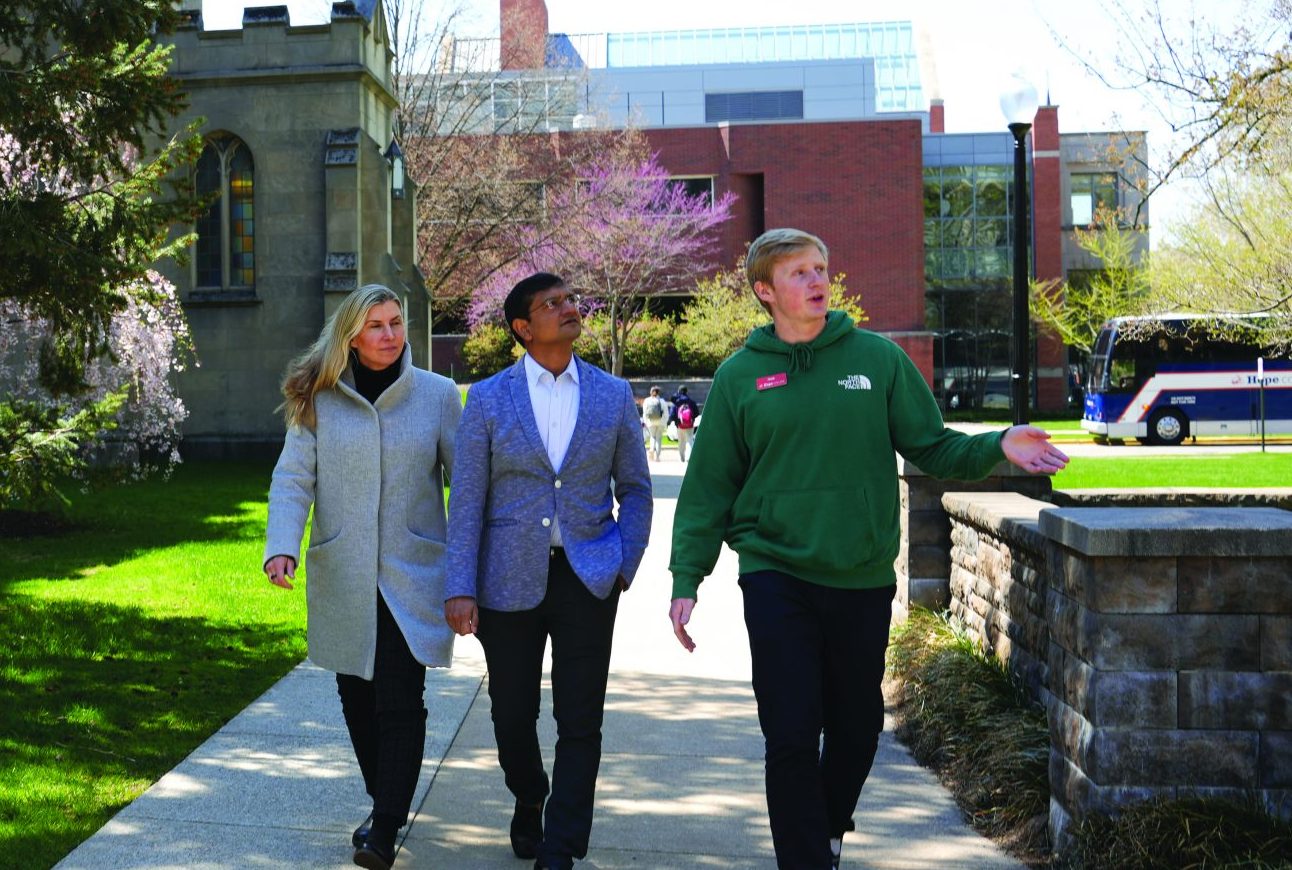
EW’s Bhavin Shah (centre) walkabout on Hope College campus: dramatic impact
However, the primary focus of agents and consultants is on America’s Ivy league and large state universities on the east and west coasts. This is because they tend to have a more international outlook and outreach. America’s 600 inland HEIs — many of them as good as the best — tend to be relatively insular, less promoted and unknown quantities to Indian school-leavers and graduate students. This awareness dawned upon EducationWorld CEO, Bhavin Shah, with dramatic impact during a recent visit to the US when he connected with the 14-member Michigan Colleges Alliance (MCA, estb.1949), an autonomous organisation which “works to strengthen the shared capacity of 14 leading independent, four-year colleges and universities grounded in a liberal arts and sciences tradition, to broaden college choice and foster career outcomes for MCA graduates in the US and internationally”.
“MCA member institutions were completely unfamiliar names to me despite my having served with EducationWorld for almost two decades. These include Alma College, Albion College, Andrews University, Calvin University, Olivet College, Madonna University, Spring Arbor University and Siena Heights University, among others. At the invitation of MCA board member Sheila Bauer, I visited some of the alliance’s member colleges and was highly impressed by their scenic campuses equipped with contemporary, digitally enabled infrastructure, highly-qualified faculty, low faculty-student ratios and excellent placement records. MCA member institutions are based in the state of Michigan, an industrial and manufacturing hub of the US. Therefore, they have good connect and internship programmes with premier companies including General Motors, Ford and Chrysler based in Detroit. Moreover, Michigan is also a defence, research, medical and chemical manufacturing industries hub of the US. So their STEM programmes are of excellent quality. MCA member colleges which are proud of their independent status also have strong faith-based traditions to provide moral and ethical education and are eager to welcome students from India. Therefore, it would serve the public interest in India, if there is greater awareness of these degree awarding hidden gems in the US. Fortunately, the editors of EducationWorld were as excited to learn and write about these excellent HEIs which are unknown quantities in India,” says Shah.
Although a tight schedule didn’t permit your editors to make a round of MCA colleges, through email and telecom exchanges, we have compiled new information about less familiar member colleges of MCA which are eager to roll out the red carpet for Indian students and sign collaborative twinning and faculty and student exchange programmes with schools and HEIs in India.
“Founded in 1949, MCA is the oldest and most prestigious consortium of private colleges and universities in the United States. Our work leverages the shared capacity of 14 member institutions which offer career oriented professional majors in almost every field of study to promote higher education access and also provide professional career outcomes for students,” says Dr. Robert Bartlett, Ph D, President of MCA.

Source: Open Doors (US State Department)
However, MCA is not a ceremonial alliance or lobby of its member colleges/universities. (Here it’s important for Indian readers to note that in the US, colleges and universities are synonymous. Unlike in India where colleges are affiliated with ‘parent’ universities, in the US, colleges and universities are independent syllabus and curriculum-setting degrees-awarding higher education institutions). MCA provides several common services to students of member colleges. Among them: it’s a “one-stop shop” for companies to recruit students for internships, project work, and place graduates in corporates, including Fortune 500 companies countrywide. Secondly, it runs an annual entrepreneurial scholarship competition open to all student and faculty teams of member colleges with entries adjudged by a panel of senior corporates and academics with winners awarded “significant financial awards”.
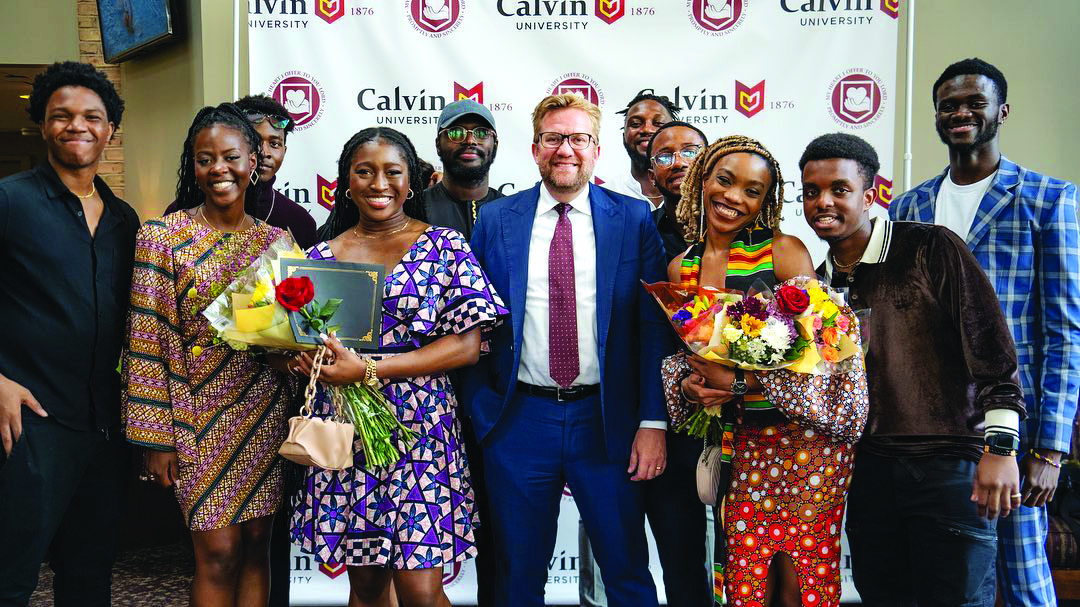
Calvin’s President Dr. Wiebe Boer: “1-on-1 support” culture
Moreover, an innovation titled AccessMCA under which international students can enter alliance universities bypassing traditional college admissions is likely to interest students in senior and higher secondary schools in India. Under this programme students of ‘associate schools’ can begin preparing as early as class IX for entry into MCA universities by devoting a few hours per week to complete courses of the alliance’s online programme. By signing up (fees: $27,000 payable in installments starting class IX) and being mentored and assessed by MCA college faculty, class XII school-leavers are guaranteed admission into an MCA institution without having to write the standard SAT or any other entrance exam. School students who complete the AccessMCA course are directly inducted into the second (sophomore) year of the four-year college degree programme of MCA member institutions on the assumption that they are sufficiently schooled for admission into the second year. This results in significant savings in tuition and particularly residential accommodation expense in an MCA college/university.
“The advantages that MCA member colleges offer are that undergraduate courses are taught by senior faculty rather than graduate students as is the case in larger universities; personalised teaching-learning because of favourable faculty-student ratios; campus safety because of smaller population and secure setting; high emphasis on values-driven education with ethical leadership embedded in all curricula; nimble response to employer needs, and highly successful alumni in business, law, medicine, government among other vocations,” says Bartlett, an alum of Yale, Stetson and Cornell universities, appointed president of MCA in 2008.

Source: Open Doors (US State Department)
But although member institutions of the Michigan Colleges Alliance are committed to a common purpose, viz “building awareness about educational options offered within the collective, enhancing affordability for students attending our campuses, and connecting students to fulfilling career opportunities through statewide corporate partnerships”, the member colleges/universities are fiercely proud of their ancient heritage and independent (of government) status, high faculty-pupil ratios and faith-based traditions which translate into academic education with strong moral and ethical content.
For instance, Dr. Wiebe K. Boer, an alum of Calvin and Yale universities who served for 12 years as CEO of All On, a renewable energy investment fund of Shell, and President of Calvin University (CU, estb.1876), which has 3,200 students with over 400 from 55 countries (including 20 from India), is unambiguous that Calvin is a “world class Christian University where students from around the world come together to engage God’s world with curiosity and conviction” and to be mentored by a distinguished faculty encouraged “to push students to ask hard questions and never settle for the status quo”.
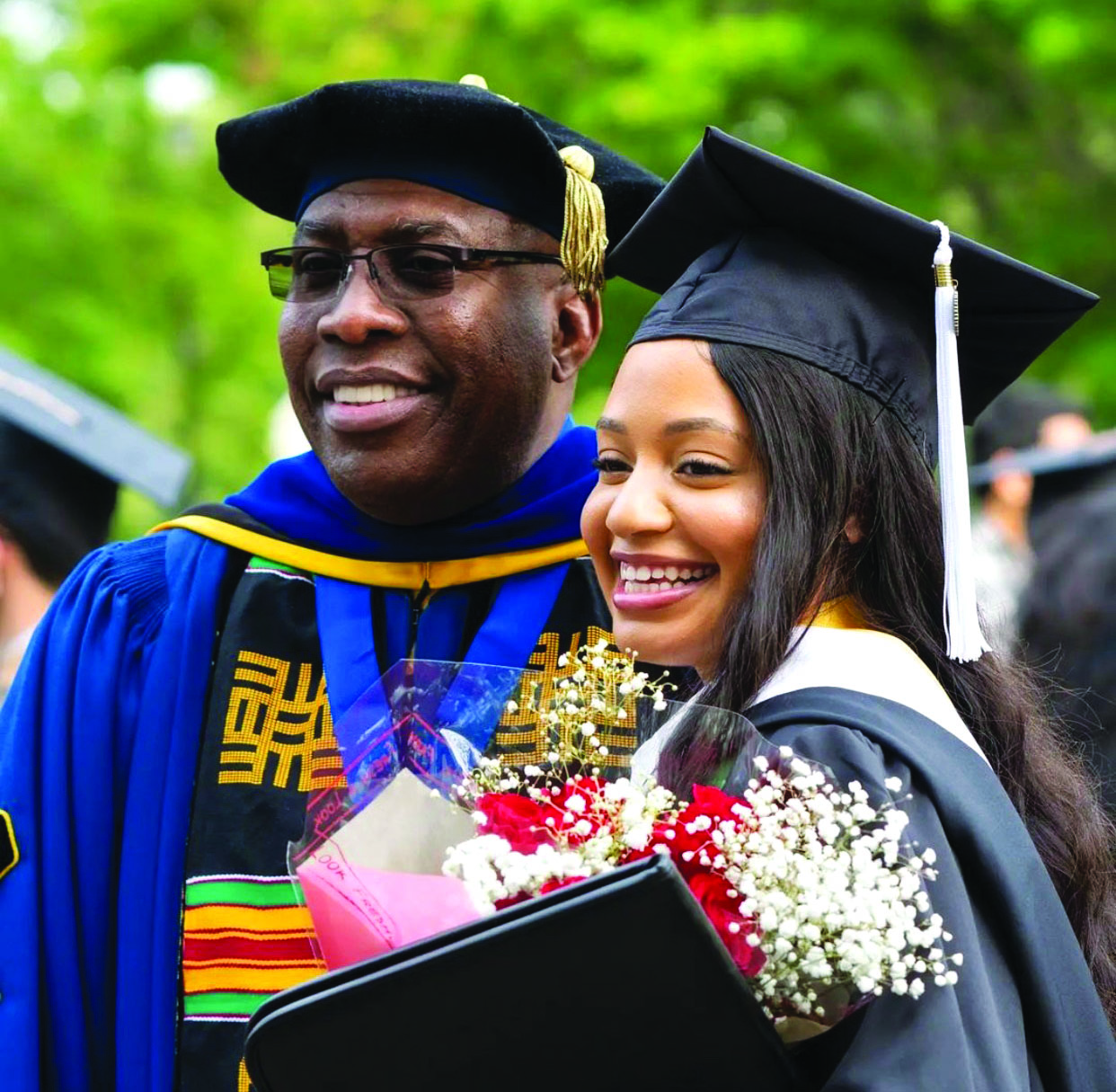
Andrews U’s Arthur (left): high licensure pass rates
Yet this doesn’t mean that CU is a seminary. (MCA spokespersons take pains to stress that member colleges welcome students of all faiths and religious persuasions). According to Boer the “1-on-1 support” provided by this boutique university to students has ensured that “95 percent of graduates are professionally employed or are in graduate school within nine months of graduation”.
Furthermore CU prides itself on its academic programmes and digital infrastructure. “Calvin offers multiple programs at the undergraduate and graduate levels in the online mode, and our work in online education is supported by top-of-the-line technical infrastructure and a dedicated instructional design team with certified expertise in online education. In particular, U.S. News & World Report consistently lists our engineering program among the 50 best countrywide and employers tell us time and again that our grads not only have the technical skills they expect from larger programs, but also the critical thinking and communication skills they expect from top liberal arts universities,” says Wiebe.
A notable feature of MCA colleges is that while most offer multiple arts, science, commerce and engineering programmes, some have acquired national and even international reputation for specialised off-the-beaten-track career programmes as majors. Thus for instance, Andrews University has 36 majors and numerous minors and also offers highly respected professional degree progammes in architecture, dietetics, medical lab science, nursing, physical therapy and speech language audiology with 80-90 percent of graduates routinely acquiring ‘licensure pass rates’, i.e, pass the professional board’s examination.
“Our students are accepted directly from their bachelors degree programs into Ph D programmes of Ivy League universities because they are well prepared. Moreover, Andrews has nationally ranked professional programs where over 90 percent students pass the licensure exams on first attempt and are employed immediately after graduation. An Andrews education does much more than produce better informed graduates, it delivers transformed graduates who are equipped to change the world,” says Dr. Christon Arthur, Provost of Andrews University (estb.1874) which has 3,400 students (including 800 international students (30 from India)) mentored by 210 faculty on its Michigan campus.
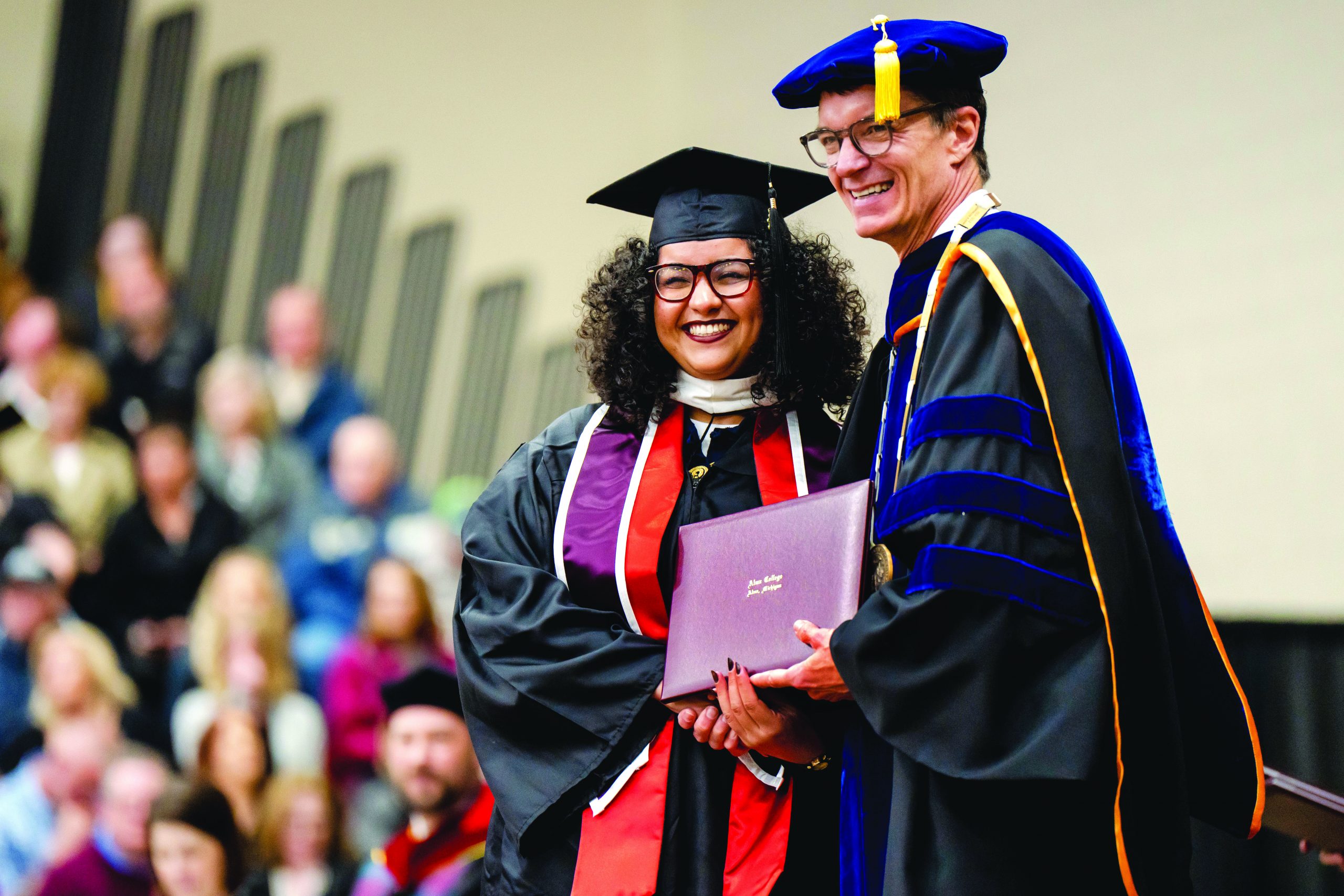
Alma’s Abernathy (right): MUN record
Likewise while Alma College (estb.1886) offers 50 majors and programs across the health sciences, business, education, humanities and the arts, “each with multiple opportunities for experiential learning”, it has also acquired a nationwide reputation for the quality of its Model United Nations program which is a “political science winter-semester course open to every student regardless of major”.
Over the past 29 years, the Alma College MUN team has won 55 “outstanding delegation” awards at the Midwest Regional Competition and 49 at the National Model UN Conference in New York City — the most of any college or university in the 95-year history of the conference.
“Students in the Alma College Model United Nations program are part of a tight-knit group of peers, learning how to work as a group, devising solutions to complex issues and debating their cases on a national stage. MUN students represent countries and non-governmental organisations, tackling topics such as climate change, public health threats, global conflicts and international trade. MUN is a truly international student organisation; it currently welcomes students from several countries, including India, the US, Russia, Germany, South Korea, Greece, Morocco, Tunisia among others. I invite interested Indian schools and students to connect with us,” says Dr. Jeff Abernathy, an alum of Longwood College, Virginia Commonwealth and Florida universities with career experience in Augustana College and Virginia Wesleyan College, appointed President in 2010. Currently, Alma College has 1,245 students from 21 countries (including three from India) mentored by 103 highly qualified faculty on its musters.
An Indian school which is highly impressed with the MUN programme of Alma College is the EW Top 10 ranked Shiv Nadar School, Noida. For the school’s MUN conference, they partnered with Alma College which “arguably has the best MUN team in the world”. Under the partnership students from Alma “spent over a month teaching our students from grade VII-XI the basics of MUN procedure and ran them through many interesting simulations,” says Col. (Retd.) Gopal Karunakaran, CEO of the Shiv Nadar School (estb.2012) in an online blog. “While exposing students to several agendas of global importance, MUN builds skills of effective and spontaneous public speaking, and being a completely students-led initiative, it also develops leadership skills,” added Karunakaran.
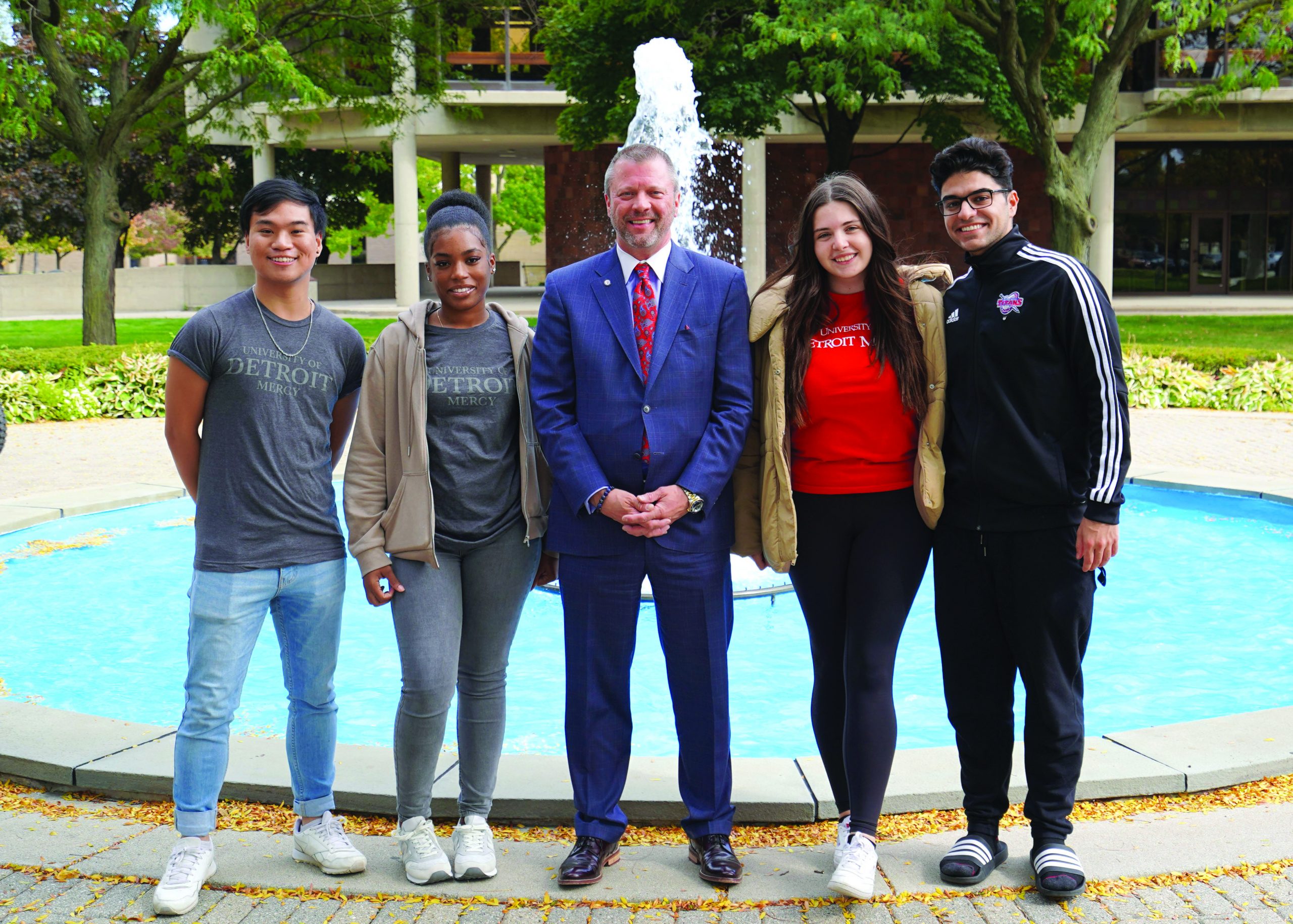
UDM’s Donald Taylor: nationwide CPA reputation
Another MCA member university which offers more than 100 undergrad study programmes spanning the gamut of arts, science, business, biology, dentistry among others, but has acquired a national reputation for the high quality of its Certified Public Accountant (CPA) degree programme is the University of Detroit Mercy (UDM, estb.1877), a “Catholic university in the Jesuit and Mercy traditions”. “We provide excellent student-centred undergraduate and graduate education in an urban context. A Detroit Mercy education seeks to integrate the intellectual, spiritual, ethical and social development of our students,” says Dr. Donald B. Taylor, an alum of University of Memphis and former president of Cabrini University, who helms this highly respected university with 5,360 students from 54 countries (including 57 from India) mentored by 216 full-time faculty on its muster rolls.
UDM’s four-year Bachelor of Science in Business Administration with a major in accounting and MBA programme which integrates CPA is likely to be of great interest to school-leavers in India. “In 2022, University HQ ranked UDM one of the nation’s best accounting colleges, as well as one with the Best MBA Programs for accounting, while College Factual ranks UDM #1 for Value for Business in the state of Michigan and in the United States. This suggests that students who aspire to practice as accountants — and especially CPAs — would do well to enrol in Detroit Mercy’s Accounting program because the probability of success is exceptionally high. Most of our students don’t need to retake the CPA exam multiple times —having earned a UDM degree, they are well-prepared for licensure exams and positions as accountants,” says Taylor.
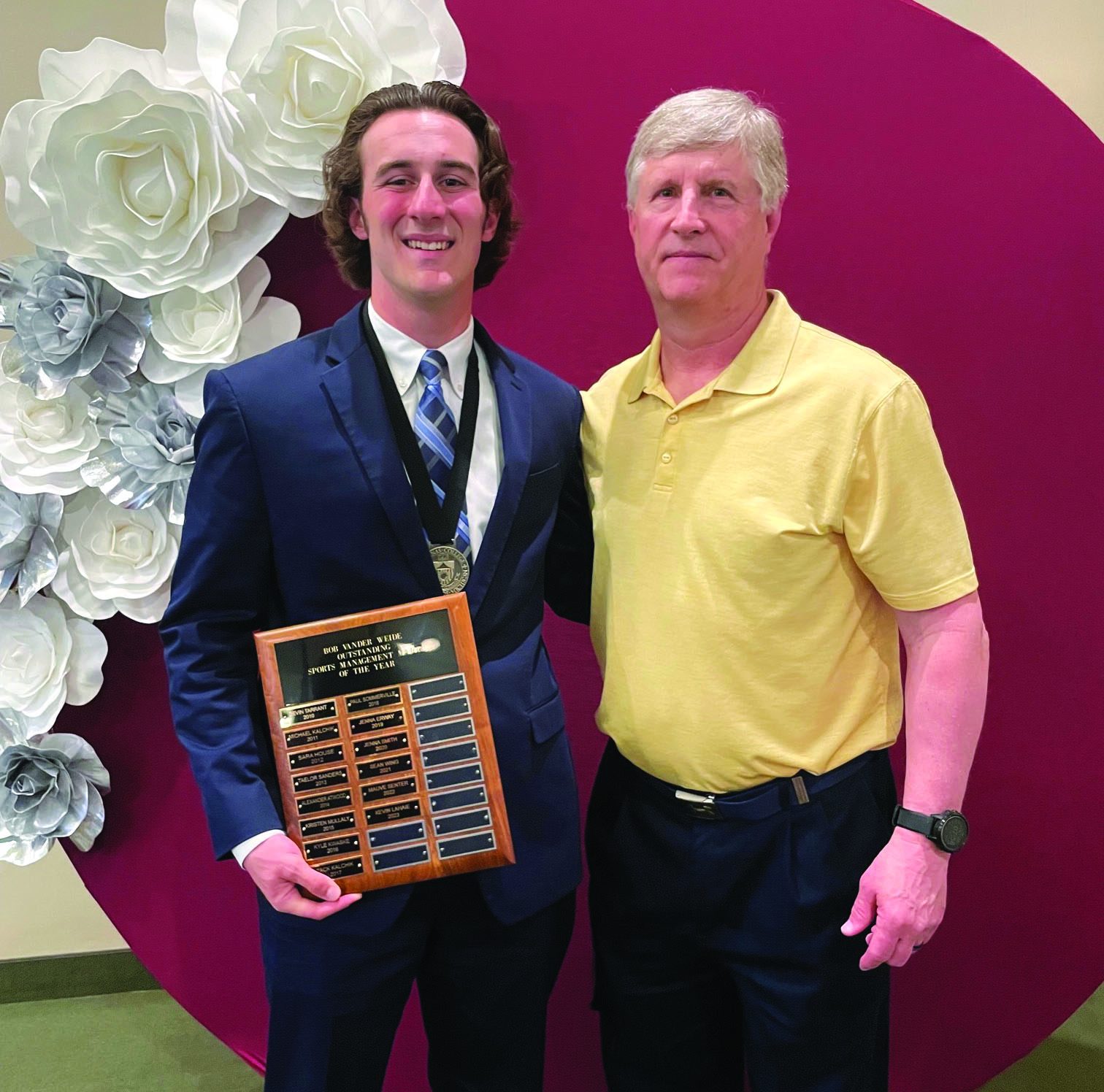
Aquinas sports director Ambrose (right)
Likewise, while providing 36 arts, science and commerce majors and several innovative minors, another MCA member institution — Aquinas College — has acquired a national reputation for its degree programme in sports management. “The distinguishing feature of Aquinas College education is that we maintain a low teacher-student ratio which ensures that our faculty really get to know students on a 1-on-1 level that really makes a difference. In the case of our dual major in business administration and sports management, students are set up for success after graduation with a wide range of knowledge and skills. The connections we have with the three local professional teams and the West Michigan Sports Commission allow students to explore a number of sports related opportunities right here within the community,” says Dr. Duane Ambrose, an alum of Western Michigan University and United States Sports Academy, and Director of the college’s Sports Management Program.
Significantly Ambrose is very receptive to the idea of collaborating with universities in India to introduce advanced sports management programmes as also to introduce cricket to Michigan in partnership with EducationWorld. “Because cricket is now the second largest sport in the world, the possibilities of true partnerships exist,” says Ambrose.
Although the majority of the Michigan Colleges Alliance member universities are undergrad teaching institutions which pride themselves upon their low teacher-student ratios and individual attention including pastoral care services, their specialisations span a wide breadth.
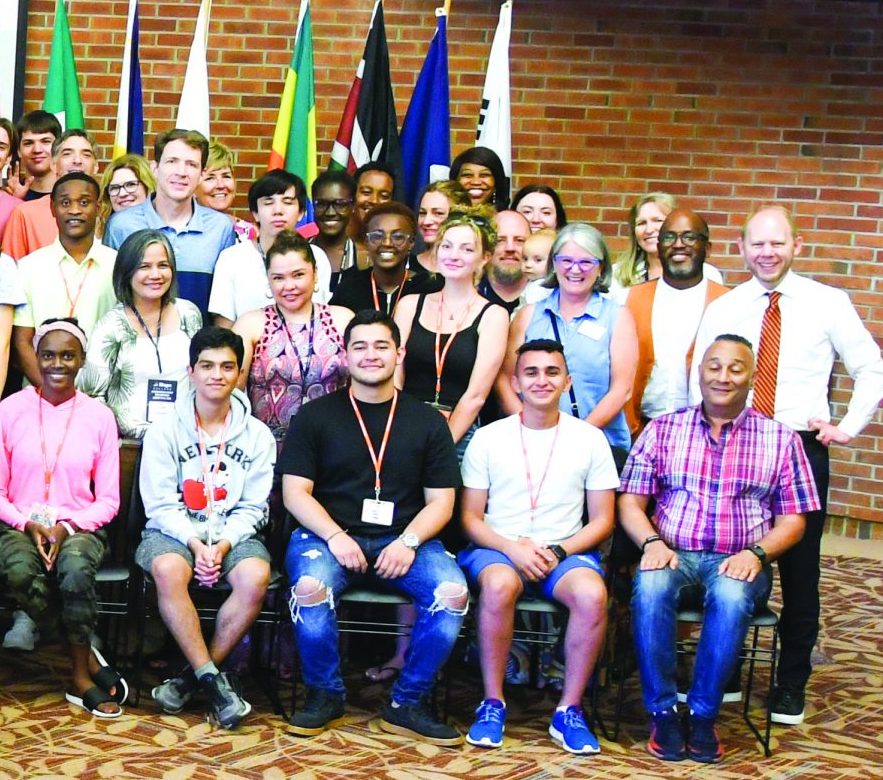
Hope College’s Matthew Scogin (rear right): undergrad research powerhouse
For instance, Hope College which offers 91 majors spanning arts, science, commerce, engineering and pre-professional programmes with wide flexibility to students to combine subjects of their choice, has built itself an excellent reputation for encouraging undergrad research programmes, especially in STEM subjects.
“Hope College is a research powerhouse. Students of all disciplines deeply explore their interests with help from expert faculty members and millions of dollars of funding each year. Hope is ranked #22 by U.S News & World Report and is one of only 62 colleges and universities recognized for providing outstanding undergraduate research/creative project opportunities, counted ahead of Cornell and among universities like Yale, Harvard, Stanford, MIT, Princeton, Amherst and Wooster,” says Matthew Scogin, President of Hope College (estb.1866) which has 3,200 students from 29 countries and offers a faculty-student ratio of 1:11.
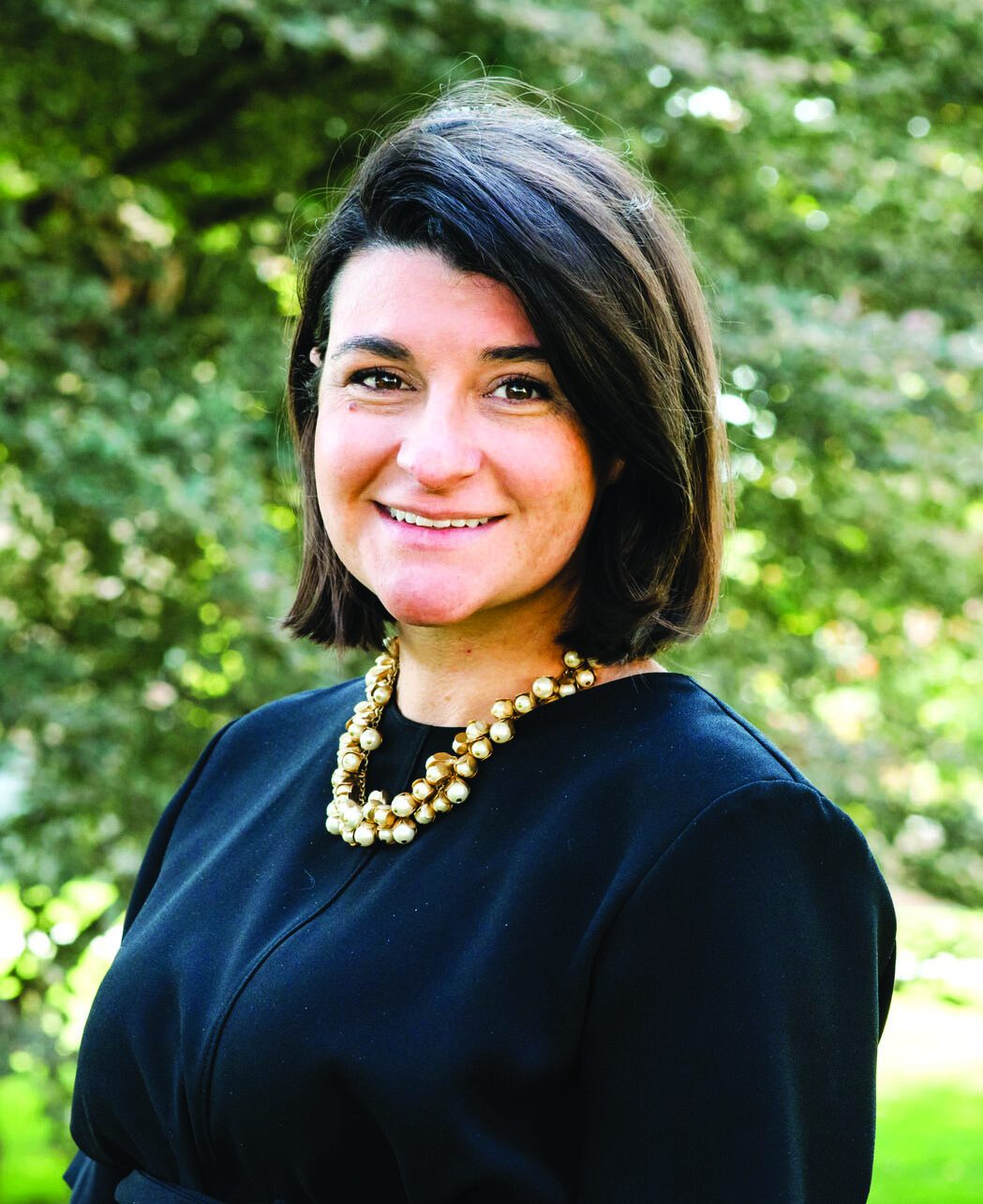
Hillsdale’s O’Toole: K-12 outreach
And it’s a measure of the academic diversity of MCA member institutions that Hillsdale College (estb.1844) has built itself a formidable reputation as a “classical liberal arts college” requiring all undergraduates to study “a classical liberal arts core curriculum in addition to their major field of study”. Moreover uniquely, it runs a widely acclaimed K-12 outreach programme under which it provides curriculum support and teaching training to affiliated schools to propagate its classical education philosophy.
“At Hillsdale, our understanding of a classical education curriculum is to teach the whole child, to help students understand the world, and to prepare young people for a life of service and success. Hillsdale College’s outreach in K-12 education is a natural extension of our educational mission. In working with local founding groups across the US, we are committed to helping K-12 schools deliver an education that is both classical and American in its orientation. The Hillsdale College K-12 Education Office does this by offering curriculum support, teacher training, and school leader guidance to dozens of affiliated schools,” says Dr. Kathleen O’Toole, Assistant Provost for K-12 Education. Currently, Hillsdale has 1,570 undergraduate and 105 graduate students mentored by 157 full-time faculty on its musters, and operates “independently of any government funding”.
MCA Member Institutions Quick Facts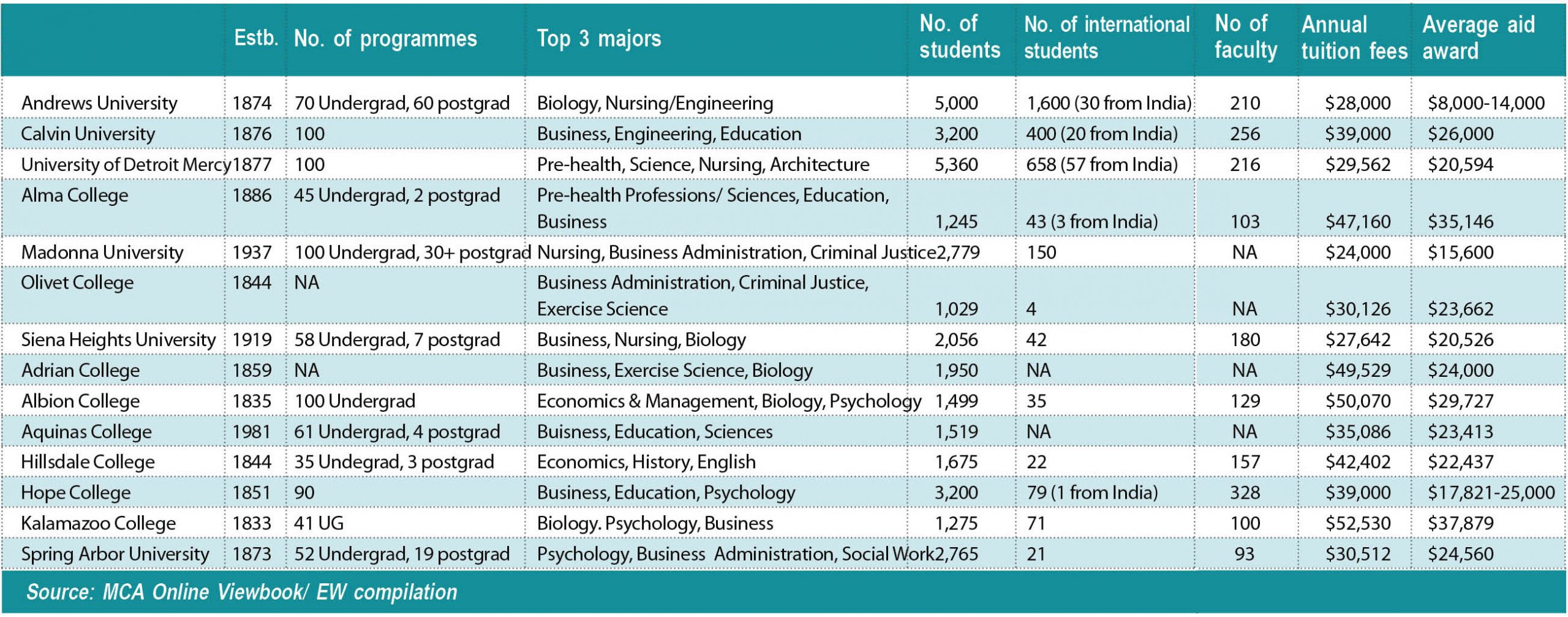
India savvy American educationists who are aware of the long values-based individualised teaching-learning experience of MCA colleges/universities, discern a good match with upscale senior and higher secondary schools in India.
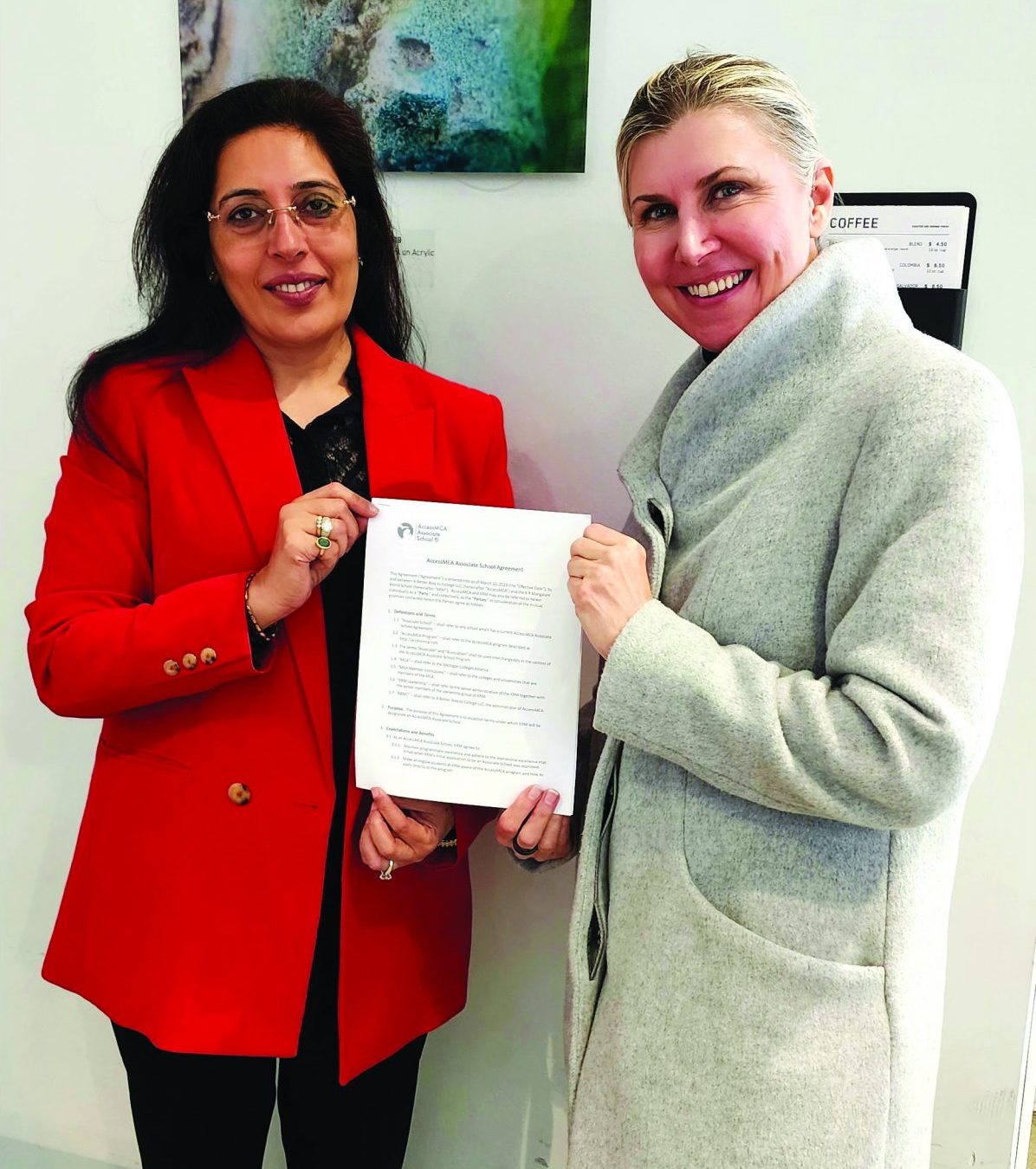
AccessMCA partnership
“There are several reasons why strategic alliances between high-ranked schools in India and MCA member institutions make sense. First, these are private institutions whose mission is to enable students to fully realise their potential. And while they do conduct research, teaching rather than faculty research is their primary focus. Secondly, MCA is an alliance of like-minded institutions. Innovatively, it has designed the AccessMCA Associate Schools programme to develop similar alliances with schools in India. The goal is to work collaboratively with associate schools to raise standards of education globally. Lastly, these colleges and universities will deliver the best results to students. MCA institutions are renowned for their students gaining admission to top graduate programs and for landing good positions in industry. They understand that their success is dependent upon the success of their graduates. Schools committed to the best for their students should want to send them to colleges and universities that share that commitment,” says Dr. Raymond Ravaglia, former Associate Dean and Director of Pre-Collegiate Studies at the blue-chip Stanford University and co-founder of the Stanford Online High School. Currently, Ravaglia who visited India in 2016, is Chief Learning Officer at the US-based Opportunity Education Foundation.
A more hands-on educator, Dr. Jyoti Gupta, Director-Principal of the well-ranked K.R. Mangalam World School, GK II, Delhi and founder of DPS, Sahibabad, is equally convinced and has signed up both these schools for the AccessMCA Associate Schools programme. “As a K-12 educator for the past several years, I have been deeply involved in counseling Plus Two students about higher education options and career pathways. My learning from this experience is that the admission application process of Indian and especially foreign universities is cumbersome with entrance tests, forms filling, etc. Also, there’s a tendency among foreign education consultants to promote mid and big-size universities in the US. In all this, very often students don’t get the university of their choice and/or make sub-optimal choices. When I learnt of the Michigan Colleges Alliance and its 14 independent institutions — some of which I visited in April — I was very impressed and signed up KR Mangalam as an AccessMCA Associate School. The AccessMCA online programme offers an excellent pathway for admission to our students who have the option of completing it over two-three years starting from class X or class XI by investing merely four-five hours per week. They will be taught virtually by MCA faculty who also mentor them. Completing the AccessMCA program enables direct admission into any of the alliance’s 14 colleges, will earn them valuable credits and save a year of college. We will be piloting the AccessMCA programme starting this July in our school,” says Dr. Gupta, an economics alumna of Delhi and Meerut universities, former principal of DPS Sushant Lok, Gurgaon and Delhi Public School, Ghaziabad. “AccessMCA Associate Schools also opens up opportunities for us to collaborate with MCA colleges on student and teacher exchanges, summer programmes and professional development/mentoring opportunities for our teachers,” she adds.
MCA member colleges have numerous commonalities. They are all vintage institutions with long and successful experience of undergraduate teaching-learning; they are boutique tertiary education institutions with low faculty-student ratios; they offer a wide range of traditional art, science, commerce and in most cases engineering and professional education, and by virtue of being sited in the industrial heartland of America, they offer excellent internships and postgrad placements, especially for STEM students; excellent infrastructure including state-of-the-art labs, libraries and sports facilities for which America’s universities have won global renown. Moreover as indicated by the enthusiastic welcome they accorded to EW CEO Bhavin Shah, all of them want to welcome school-leavers and initiate faculty and student exchanges, twinning programmes with schools and higher education institutions in India, initiatives encouraged by the National Education Policy (NEP) 2020.
According to Dr. S. Vaidyasubramaniam, the erudite (Asian Institute of Management and Harvard Business School) Vice Chancellor of the EW Top 10 ranked Shanmugam Arts, Science, Technology & Research Academy (SASTRA) Deemed (private) University, Thanjavur, 9 million students worldwide will leave home by 2030 to pursue higher education abroad with the number of students leaving from India doubling to 400,000 annually.
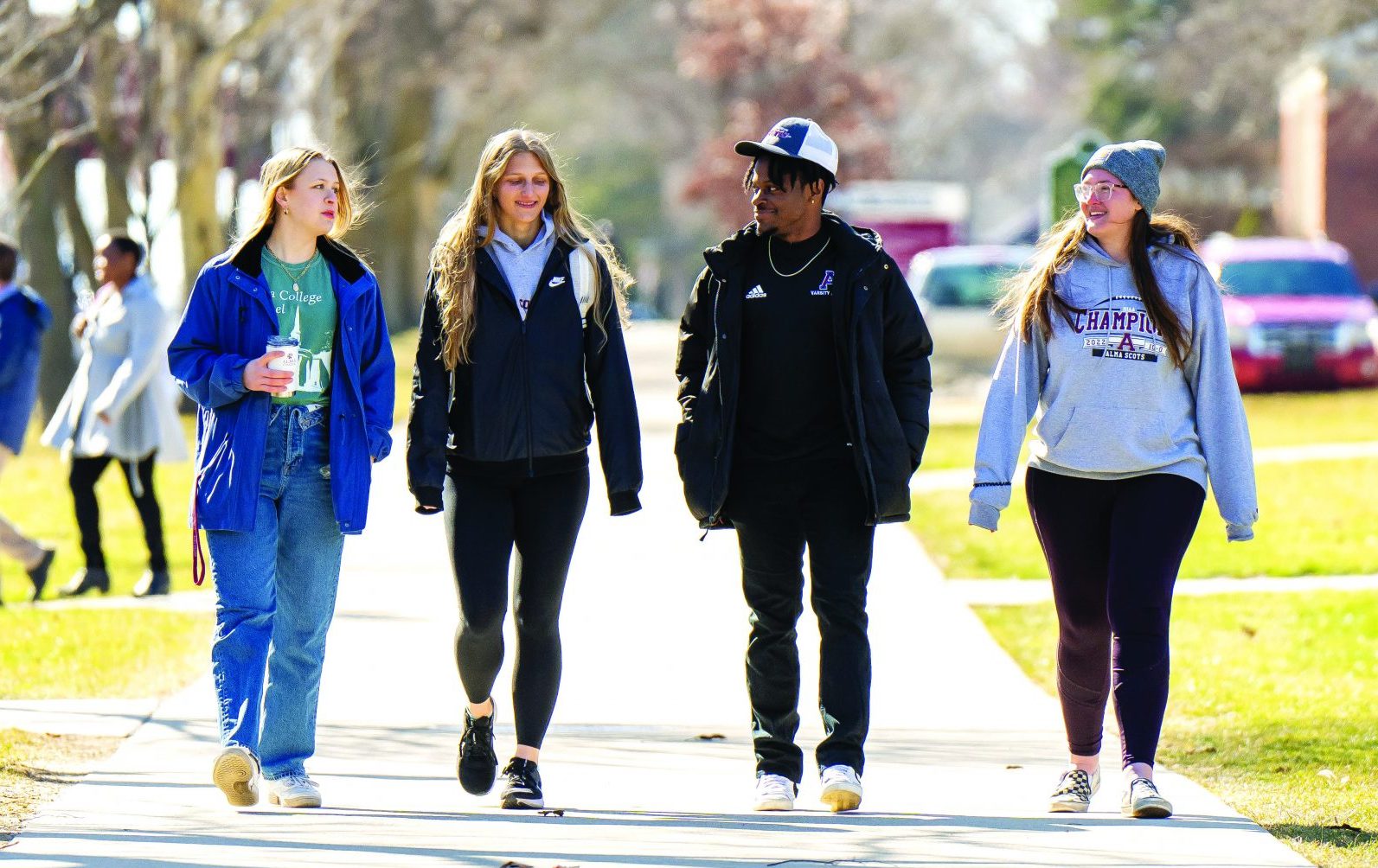
Alma College students: warm welcome assurance
“With such a high global market for international education the competition among the top host nations will get fiercer than before. It is in this global backdrop that the American trio riot — employers’ demand for 2.5 million STEM jobs to fill the shortage by 2030, declining youth population and the compelling need to grow and revitalise domestic capacity in strategic industries — forces the US to get its act together to reverse its declining share of access to the world’s top students. Needless to mention growing geopolitical tensions with China may be a speed-breaker to the Chinese student mobility to the US,” wrote Vaidyasubramaniam in the New Sunday Express (May 21).
Be that as it may with annual government (Centre plus states) outlay for public education in India mired in the 3-4 percent of GDP rut and little prospect of genuine higher education reform in the near future, ambitious school-leavers and doting parents would do well to carefully examine the virtues of member universities of the Michigan Colleges Alliance — the AccessMCA proposition, low faculty-student ratios, willingness to award scholarships, internships and placements, and safe and secure values-added higher education in scenic campuses with excellent 21st century infrastructure. It seems like a package too good to refuse.
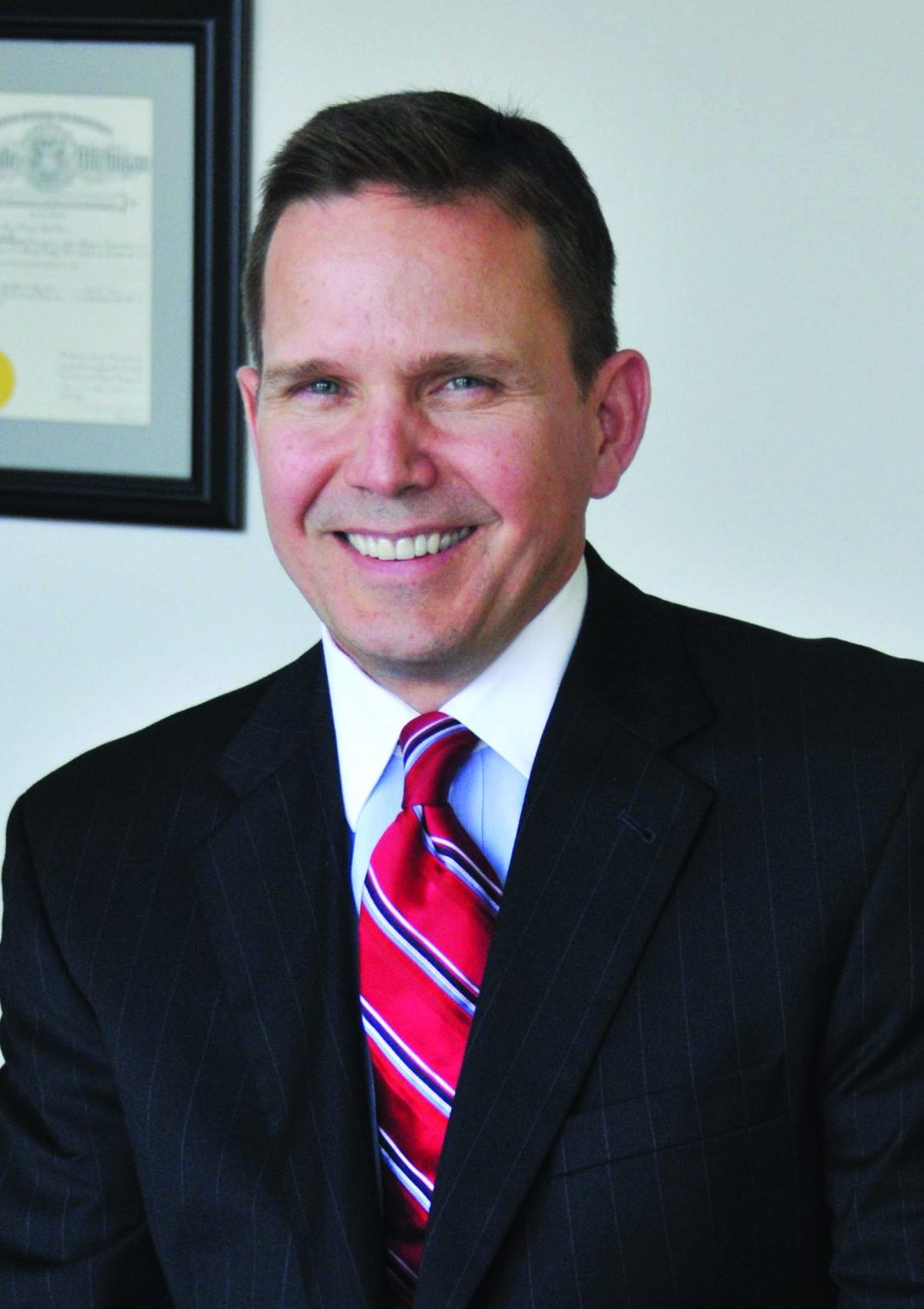 “MCA is a national leader in higher ed collaboration”
“MCA is a national leader in higher ed collaboration”
MCA campuses represent smaller, nurturing environ-ments that encourage self-discovery, leadership, ethical values, critical thinking…
Summiya Yasmeen interviewed Dr. Robert Bartlett, President, Michigan Colleges Alliance (MCA), over email. Excerpts:
What are the aims and objectives for which the MCA was promoted?
Founded in 1949, MCA is the oldest and most prestigious consortium of private colleges and universities in the United States. Our work leverages the shared capacity of 14-member institutions — 43,000 students — offering professional majors in virtually every field of study, to promote higher education access and professional i.e, career outcomes, for students.
How satisfied are you that these aims and objectives have been attained?
Very. MCA is a national leader in higher education collaboration. Its initiatives are emulated by peer organisations across the country.
What are the major current initiatives of MCA?
MCA has pioneered several initiatives to achieve its core objectives of promoting higher education access and connecting students with meaningful careers around the world. They include the Concierge Career Connection — a collective “one-stop shop” for Fortune 500 corporate employers to access MCA’s students for internships, project work, and full-time placement; the Cooperative Learning Collaborative — a unique and robust interdisciplinary student internship program with corporate employers that includes direct project management learning experience with academic credit; and the Independent Innovators Network — an annual entrepreneurial scholarship competition for MCA student and faculty teams with significant financial awards.
More recently, we have launched AccessMCA, an innovative online study program for international students, allowing them to undertake first year university education without leaving their home countries. Students who complete the AccessMCA programme are guaranteed admission into an MCA institution without having to write any entrance exams. Many schools in India have already signed up for this programme.
In India, the Ivy league/big universities tend to hog disproportionate limelight. But America also hosts several low-profile private universities such as MCA member institutions. What would you say are the USPs of America’s smaller, low-profile private institutions?
MCA campuses represent smaller, nurturing environments that encourage self-discovery, leadership, ethical values, critical thinking and civic engagement. There are about 600 colleges and universities in the MCA member classification throughout the United States, and MCA institutions are among the best in national rankings. In addition, many American corporate and political leaders are graduates of our institutions, often in combination with graduate degrees from schools of business, law, and Ph D programmes.
Defining attributes of MCA institutions are academic rigour — undergraduate courses are taught by senior faculty, rather than graduate students, as is the case at large universities; highly personalised learning environments and student experiences; campus safety; and values driven education with ethical and leadership emphasis. Moreover, all our 14 member colleges are nimble and responsive to employer needs in contrast to big government universities that often grapple with large bureaucracies.
The general impression is that the Ivy league East and West coast universities are way ahead in offering digitally-enabled/advanced education. How well-equipped are MCA member institutions to offer the latest digital technologies-enabled higher education?
Almost all high-quality American colleges and universities have incorporated technology in teaching and research. The Covid pandemic accelerated this considerably. However, the level and use of such capability vary greatly, depending on institutional resources and programs of study. MCA institutions are known for being cutting-edge in the use of technology, especially — in engineering, computer science, health sciences, and related disciplines.
Earlier this year, the Indian government allowed foreign universities to establish campuses in India. Is MCA interested in this opportunity and/or any collaboration agreements with Indian universities?
MCA would be most interested in this idea; it’s part of the AccessMCA master plan. As a closely aligned collective of universities and colleges, we would approach the opportunity as a single institution, offering undergraduate and graduate programmes ranging from liberal arts study to engineering and health sciences.
What are your future growth and development plans for MCA?
MCA will continue to expand entry into international student markets and deepen connections with Fortune 500 and other global companies for student career opportunities.
College of Creative Studies
Sited in Detroit city (pop.639,000) aka Motown which hosts America’s legendary Big Three auto manufacturing corporations, General Motors, Ford Motors, and Chrysler Motors, the College for Creative Studies (CCS, estb.1906) is a top-ranked art and design college offering innovative, experiential, industry-connected undergrad and postgraduate programmes.
This low-profile, exclusive, design-focused 117-year-old college has built an international reputation for producing avant-garde, inventive artists and designers, especially automobile designers, much sough-after by the mobility and associated industries. CCS alumni include Bob Boniface, director of design, General Motors; Harry Bertoia, sculptor and contemporary furniture designer; Tim Flattery, Hollywood concept designer and Wendy Froud, designer of YODA, the popular character in the Star Wars franchise. In 2014, the business networking platform LinkedIn.com ranked CCS the #3 design school in the US based on alumni success.
In particular, its pioneering contribution to developing automobile and transport design into a creative art form is acknowledged worldwide. Over the years, the college has expanded largely because of philanthropic support from the Ford family.
Currently, CCS offers Bachelor of Fine Arts (BFA) and Master of Fine Arts programmes in advertising, design, animation, art education, ceramics, craft and material studies, entertainment and fashion design, fibre and textiles, film, game design, glass, illustration, interior design, metalsmithing and jewellery, motion design, photography, product design, transportation design, and user experience design to 1,463 students including 24 from India. They are mentored by 51 full-time and 261 part-time faculty drawn from industry.
 “CCS is distinguished by its rigorous curriculum taught by world-class faculty in world-class facilities. Students benefit greatly from small class sizes with individual attention. We offer a wide range of excellent study programmes that include our globally acclaimed transportation design degree as well as courses in animation, game, entertainment arts, film, and concept design. CCS is acknowledged worldwide for transforming automobile design into an art form. It also has a long history of support from a wide range of industries. We are very interested in welcoming more Indian students,” says Donald L. Tuski, president of CCS. An alumnus of Olivet College, Michigan, Tuski was former president of Pacific Northwest College of Art in Oregon and Maine College of Art, before being appointed President of CCS in 2019.
“CCS is distinguished by its rigorous curriculum taught by world-class faculty in world-class facilities. Students benefit greatly from small class sizes with individual attention. We offer a wide range of excellent study programmes that include our globally acclaimed transportation design degree as well as courses in animation, game, entertainment arts, film, and concept design. CCS is acknowledged worldwide for transforming automobile design into an art form. It also has a long history of support from a wide range of industries. We are very interested in welcoming more Indian students,” says Donald L. Tuski, president of CCS. An alumnus of Olivet College, Michigan, Tuski was former president of Pacific Northwest College of Art in Oregon and Maine College of Art, before being appointed President of CCS in 2019.
Unsurprisingly, CCS has a history of deep and strong partnerships with industry. Much of its early success was attributed to its close integration of rigorous courses with progression of the art and design movements and world-class, contemporary exhibitions — a tradition that continues. Industry professionals, practitioners, renowned painters, sculptors and craftspeople from around the world are enlisted to teach courses. Moreover, students work on real-time industry projects to acquire hands-on learning experience.
For instance, the General Motors (GM)-CCS relationship dates back several decades. According to Tuski, GM has supported design projects and other activities of the college and recruited its graduates — currently over 200 college alumni are employed in GM’s design departments.
Moreover its location in Detroit — the sole Unesco-designated City of Design in the US — and specifically within its Innovation District ensures access to a diverse range of industry talent and resources. CCS is spread across two campuses — the Walter and Josephine Ford Campus and A. Alfred Taubman Center for Design Education. Both campuses provide state-of-the-art classrooms, lecture halls, design studios and labs with newest equipment to facilitate hands-on learning.

Dr. Donald L. Tuski (R)
Quick facts
Estb.1906
Students: 1,463
International students: 102 from 16 countries (24 from India)
Faculty: 51 full-time and 261 part-time
Study programmes: 35
Tuition fees (annual): $36,000 (after scholarships)
Admission deadline: May 1























